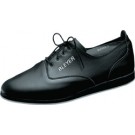During growth, the foot goes through a series of stages of development; we need to know to distinguish at all times what is normal and what is pathological.
1 YEAR. The foot is a key member of cartilage vulnerable to any external aggression. So when the child begins to take his first steps, it is very important to avoid being overweight, and help right foot growth with a shoe, that controls the position of the heel (buttress strong), and not pressing the toes over (flexible soles).
1 TO 3 YEARS. The child is in a period of searching for the vertical where almost anything is possible. Concerning the form of support, do not be too quick to take it as pathological. It is no more than a transition to "normal." Some children fall frequently, others support the foot inward, and others do it with his foot out, and so on. Moreover, in this age there is a physiological transition of Genu Varus ("legs in parenthesis") to the genu valgum ("knock-knees") and vice versa, until the muscles of the legs are stronger.
This also has repercussions on the way to support your feet. Likewise, there is an increase in plantar fat level of the vault or arc, which can give a false appearance of flat feet. For all this, it is very difficult at this age to properly speak of flat feet or knock-knees, which are usually false problems, often aggravated by maternal anxiety, which is why it is always advisable to see an orthopedic doctor or with your family doctor.
4 YEARS and Above. There are some physiological changes in the rotation of the lower limbs, due to the gradual reduction of the femoral joint anteversion and external rotation that is being produced in the tibia, which also influences the way feet are flat on the floor. The angle of variation decreases, and this makes them go and correct the tendency to adduct the forefoot and valgus flat foot, characteristic of the feet in the first years of life (between 1 and 5th years).



0 comments:
Post a Comment